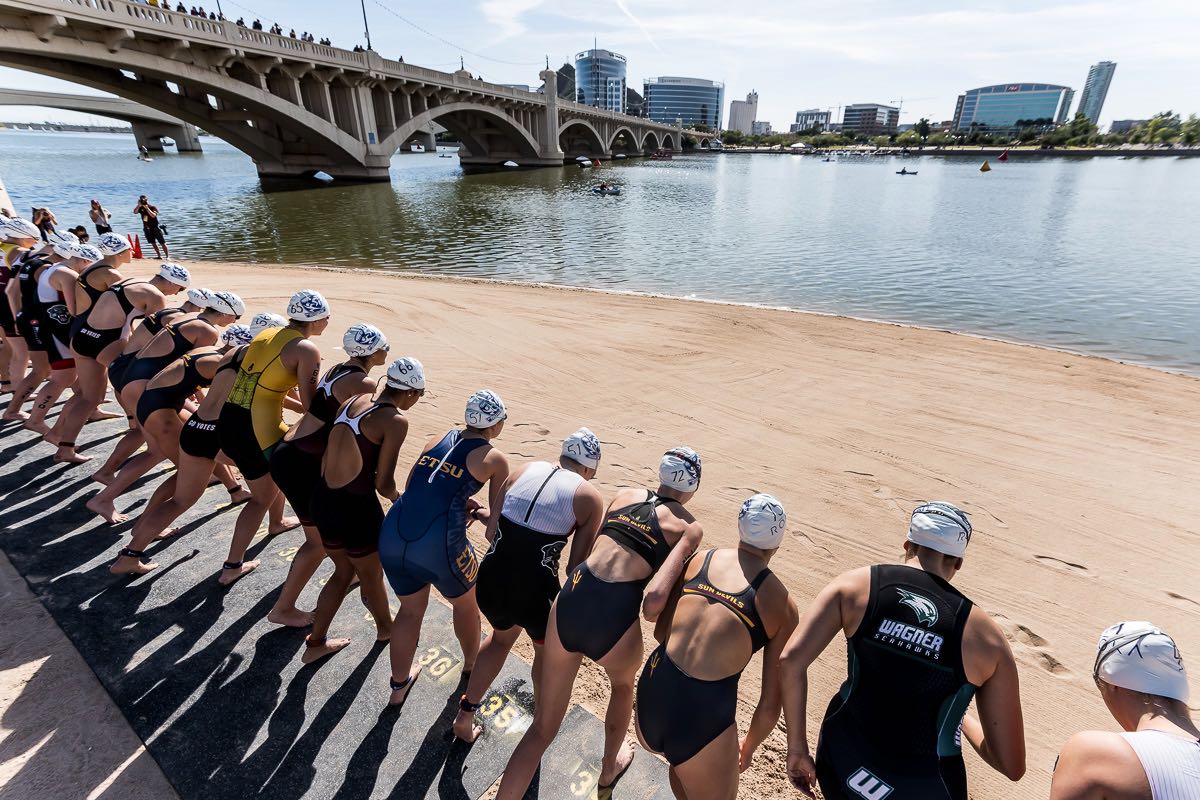Tri University: The Art of Building a New NCAA Team

Photo: Nils Nilsen
You’ve probably heard by now that triathlon is the newest varsity sport for women. That’s right, young female athletes across the nation can now be recruited for competing in NCAA-level triathlon.
Right now, women’s triathlon is considered an emerging sport for women, and in order to keep its varsity status, 40 schools must add a women’s team by 2024. Things are looking good—so far, 26 schools have signed on to give multisport a try.
Two of the most recent schools to add triathlon to their rosters are Davis and Elkins College (Elkins, West Virginia) and St. Thomas Aquinas College (Sparkill, New York). We keep hearing about these new additions, but what is it like to build a competitive team of young student-athletes from scratch?
Rethinking Recruiting
In talking to Davis and Elkins’ head coach, Chris Hammer (a triathlete himself), he made it clear that recruiting for triathlon is, well, tricky. Although there are many opportunities for junior triathletes to shine pre-college, not all of these young women are chomping at the bit to compete at the university level.
“I was recruiting a lot of high school swimmers,” said Hammer. “Most of my team committed just weeks before the start of the season, and only one of them had a triathlon background.”
Swimmers: you listening? Just because you’re burned out on that black line doesn’t mean you can’t dive (swim and dive pun, get it?) in to a new sport in college!
Swim…Now Bike and Run
Both Davis and Elkins and St. Thomas Aquinas heavily recruited high school swimmers. Because varsity triathlon is draft legal, it meant that many of the women came out of the water in the lead pack—super important for success at this format. But what about the bike and the run?
St. Thomas Aquinas head coach George Erazo, an alum of STAC and an elite track and field athlete, noted that despite some initial challenges, his athletes have embraced the last two legs.
“Right now we’ve got flat pedals on the bikes,” said Erazo. “But we’ve got a lot of hills around here, so we’ll do loops around campus on the hills. We’re scrappy, you know?”
Scrappiness > clip-in pedals, amiright?
The two schools are also big fans of track workouts, focusing on that unique and oh-so-painful combination of speed plus endurance. Even those workouts were built up brick-by-brick (get it?).
“We started by practicing the basics—getting comfortable on a bike, doing brick workouts—we started at square one,” commented Hammer. “It really speaks to the capacity of these young triathletes to jump right in with such great determination.”
Those Who Tri Together, Stay Together
When asked about their teams’ vibes, both Hammer and Erazo gushed about the incredible attitudes their athletes bring each and every day.
Hammer was oozing pride about the women of Davis and Elkins when he told me the teammates clicked from the very beginning and continue to act as role models for each other.
Erazo echoed the same, saying he is “so proud of how motivated” his team is.
“When you look at these women, you see that they are made of pure determination and motivation—these women prove every day that they want to be the best,” said Erazo.
Not sure what your collegiate athletic career is going to look like, fellow female tri friends? Feel free to reach out to any varsity triathlon coach—they’re going to be jazzed to hear from women like you who want to be trailblazing collegiate triathletes.
Editor’s note: Both of these teams competed in the USA Triathlon Collegiate National Championships on Nov. 4 in Tempe. Davis & Elkins College Triathlon team finished fourth in the Division II classification.